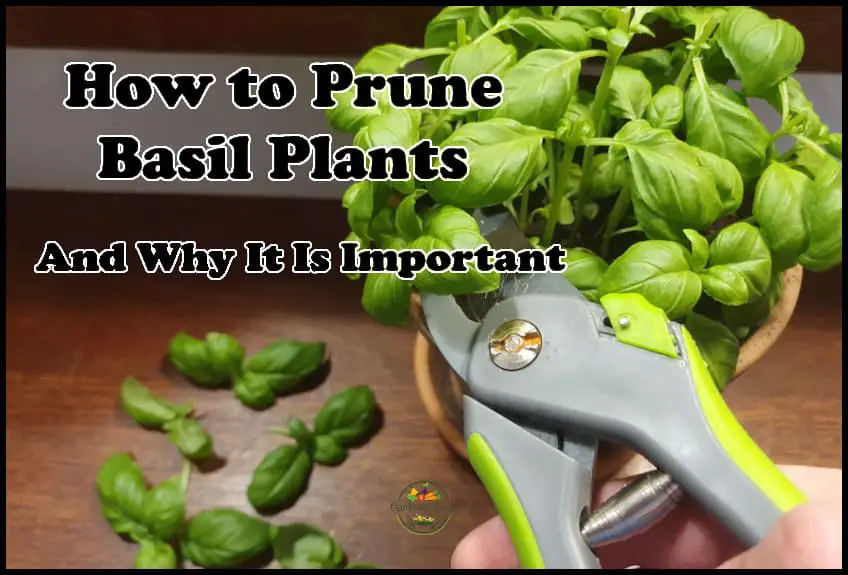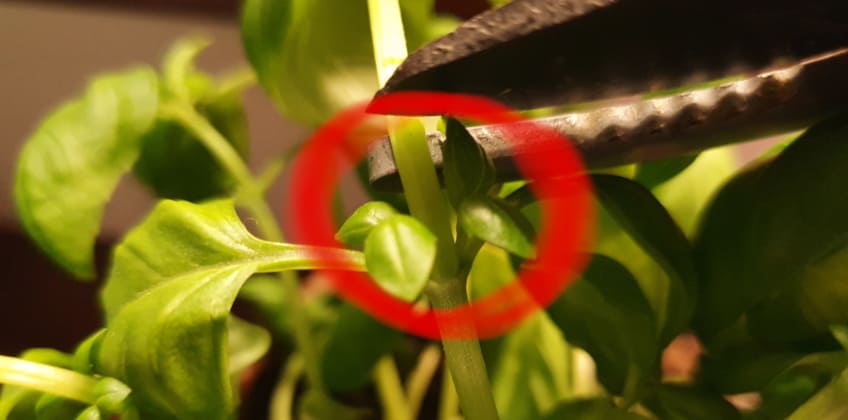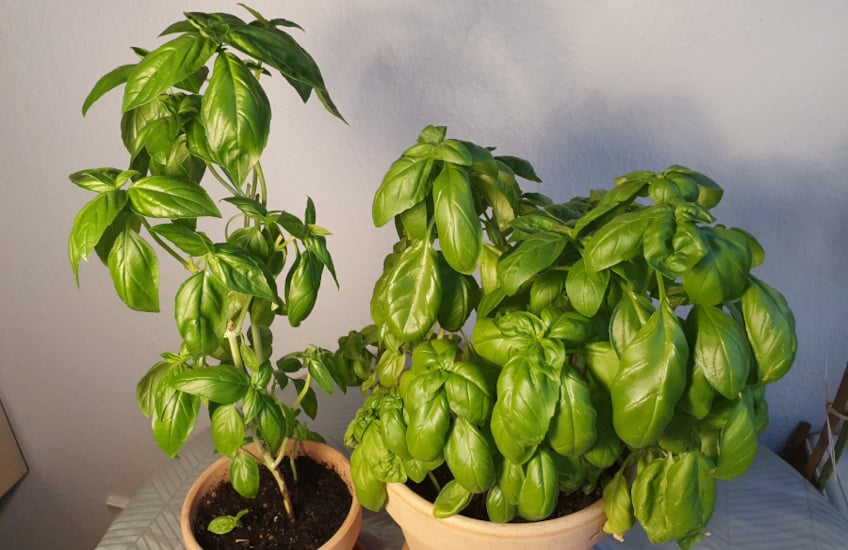Pruning your basil is one of the most important things you can do if you want bigger and bushier plants that live for longer and produce a lot more leaves overall. I will teach you precisely how to do it and why it is so important in this article.

Pruning essentially means cutting back a plant to promote growth, and while it might seem a bit counterintuitive that cutting a basil plant back can make it produce more, it is actually the best and fastest way to increase your plant’s production and make it bushier. Pruning basil is super easy and essentially the same as harvesting if you know how to do it right.
To prune basil, cut or pinch stems about half an inch (about 1 cm) above leaf nodes. This will cause the stems to split and grow as two stems instead of the original one that was cut. There should be at least three leaf nodes left on the stems you cut for the best results.
Always make sure to remove any dead growth from your basil when you prune it.
You don’t have to cut the stems one by one. You can easily grab and cut a handful of stems at the same time to speed things up.
You can also only prune your basil when you actually need the leaves for cooking. In that case, make sure you cut from different parts of the plant each time to give it time to grow back.
Here is a photo of one of my own basil plants to show you precisely where you should cut the stems when pruning to get the best results. You can see a set of leaf nodes inside the red circle. When you cut above it right around where my pruning shears are on the photo, the two leaf nodes will begin to grow as two new stems instead of the one you cut, essentially doubling the growth and production.

The leaf nodes on a basil plant are where the most concentrated amount of the hormone that causes the plant to produce leaves and roots is found.
Whenever you cut a stem just above a leaf node, the energy is diverted into the leaf node instead of the main stem itself, which causes two new stems to grow instead of the original one, thereby making the plant bushier and bushier and produce more and more leaves, as you prune it more and more.
I recommend that you begin to prune your basil early as you will be rewarded for that later in the season. There should be at least three leaf nodes before you prune your basil the first time, though, as it can otherwise take a very long time for it to grow back properly. Keep pruning every few weeks throughout the season to get the biggest, bushiest plants.
Of course, you can use the stems and leaves you remove from your basil plants in cooking (which is why I compared pruning to harvesting earlier), but another brilliant thing you can do with the cuttings is to propagate them in water to grow them as new plants. This is an easy and incredibly powerful way to grow a lot more basil without having to buy more seeds or plants. I have a guide on how to do it on this link.
Why Pruning Basil Plants Is So Important (3 Reasons)
An important reason why it is so important to prune your basil plants is that it is a way to make them grow faster and produce a lot more leaves while you still get to harvest and use a lot of them. That is not the only reason, though.
I have been growing basil for many years and I have learned about three important reasons why you should always prune your basil plants.

Pruning makes basil plants grow faster and be more productive
My favorite thing about pruning basil is that it makes the plants grow faster and produce a lot more leaves than otherwise.
As I have already explained in this article, basil stems split into two when you cut them, essentially doubling the production of leaves compared to before. Naturally, this also makes the plants much bushier than if you didn’t prune them.
Pruning is perhaps the most effective thing you can do to significantly increase the yield from your basil plants, but it is not the only thing. I share some more tips for that on this link.
Pruning extends basil’s growing and production period
Basil plants begin to flower some time during the summer. This is a completely natural part of the plant’s lifecycle.
When basil plants flower, they tend to grow slower and slower and not produce many new leaves. This happens because the plant is diverting most of its energy toward the production of flowers and seeds.
Pruning is a great way to delay flowering and extend the growing and production stage, ultimately allowing you to harvest a lot more basil for much longer than otherwise.
I have another article where you can read more about what to do when your basil is flowering, whether you want to keep your plants growing and producing or not. You can find that article on this link.
Pruning reduces the risk of pests and diseases attacking basil
Pruning involves removing dry and dead growth from your basil. When you do that, you reduce the risk that pests and diseases attack your plants since dead growth is more at risk of some specific problems.
Read My Complete Guide to Growing and Caring for Basil
I have written a thorough guide where I cover all parts of growing your own basil including choosing a variety, sowing the seeds, the best growing conditions, pruning, propagation, harvesting, storing, solving various problems, and a lot more. You can find the article on this link.

